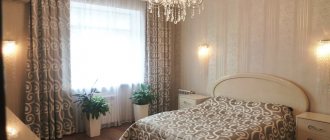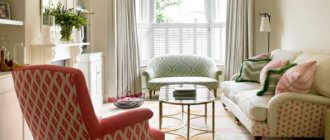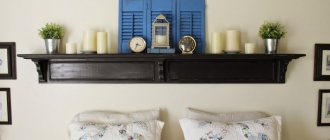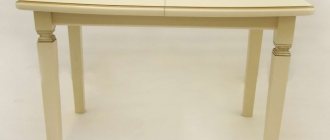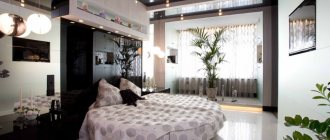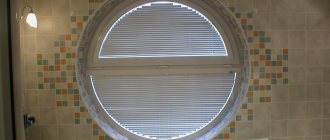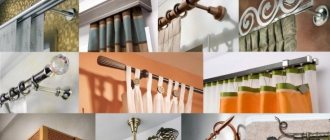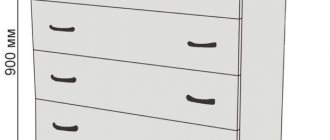What is a curtain?
The direct purpose of the cornice is to firmly fix the canvas at a certain height. A cornice is a specialized structure with fastening elements located horizontally.
In simple terms, this is a rod that is attached to the wall or ceiling. It can last for many years, with proper use, thanks to its simple design.
What is the difference between a curtain and a cornice?
Thus, a curtain is a curtain, and a cornice is a device that is mounted above the window and used as a holder for curtains and curtains. Based on these definitions, you can easily understand how these two elements differ from each other.
As a rule, curtains are used to cover door and window openings. Traditionally, they are wide and long curtains that touch the floor covering. Often curtains are made of airy and transparent fabrics. As a rule, such a canvas is plain, without additional decorative elements, but in some cases you can see fringe or tassels.
There are several ways to attach the canvas. The most common option is loops that are sewn to one of the edges of the fabric; the same fabric is used to make them. Eyelets are attached to the opposite edge. Only after this the finished fabric can be attached.
The cornice is the very element that is attached to the wall. It allows you to hold the curtain in the desired position. This device resembles a crossbar made of metal or wood.
It must be fastened in such a way that the curtain extends completely beyond the edges of the window or doorway, without leaving any gaps. The control process can be manual or automatic using a remote control. It is important to consider that the design features of each option differ from each other.
In addition, this concept has a different meaning, as a result of which it is sometimes used incorrectly in everyday life. Previously, a cornice was a name given to a small protrusion on a building, the intersection of rocks and mountain streams. If you take this information into account, you can correctly determine that a cornice or curtain is not enough to decorate the room.
What kind of interior are curtains suitable for?
Lovers of innovation decorate their windows with roller blinds that do not require a cornice, but for lovers of the classics, modern curtains for curtains are ideal.
Today, curtains are universal for various styles. Forged metal products look exclusive, emphasizing the sophistication of the classical style.
Plastic products fit organically into styles such as hi-tech or minimalism. Stretch ceilings are popular today.
For this case, curtains under the ceiling for curtains are suitable. They are installed in such a way that the cornice itself is not visible, due to the fact that it is hidden in a special niche above the suspended ceiling.
How to choose a curtain rod?
The choice of curtain rods depends on the design style of the room: forged curtain rods will fit organically into a living room designed in a classic style, and profile cornices with special mechanisms for Roman or Japanese curtains will be suitable for a high-tech bedroom. For some interiors, ceiling plastic cornices are suitable - as inconspicuous and functional as possible (for a luxurious Empire style or a bright style in the spirit of Africa).
It is important to consider the following parameters:
- Cornice size: Solid cornices are not suitable for small spaces. Thin cornices would be appropriate here.
- Room size: with the help of a correctly placed cornice, you can visually make the ceilings higher.
- Window size and window shape: a flexible cornice would be appropriate for a round window, while an attic window should be decorated with a double cornice (at the top and bottom of the window).
- Distance from the window sill and battery: if you do not take this distance into account, the curtain will sag at the point of contact with an obstacle.
- Material from which the cornice is made: metal, plastic or wood.
- The material from which the curtains are made: the heavier the curtains, the stronger the curtain rod should be.
Are you choosing a lambrequin for curtains?
About how to choose curtains with a lambrequin, what types there are and what to pay attention to. Day-night roller blinds are an excellent and functional choice! With their help, you can regulate the level of light in the room. Read about what they are and how to choose here →
Differences by species
There are different types of curtains for curtains. Classification occurs according to installation method, material and structure. To choose the right model, it is worth understanding the types in more detail.
Note!
How to hang curtains beautifully - instructions for installing types of curtains. Types of fastening, materials and colors (photo + video)
Curtains with eyelets - advantages and disadvantages of eyelets, features of installing curtains. Selection of eyelet materials and fabric for curtains (photo + video)
Curtains for the balcony: TOP-150 photos and videos of curtain designs for the balcony. Application and necessity of curtains on the balcony, choice of fabric and colors
Installation method
According to the installation method, curtains are divided into two types:
- Cornices attached to the ceiling. In most cases, they are made of plastic to facilitate construction. Such curtains can be straight, wavy and round.
- Cornices attached to walls. A common, classic option that can withstand a lot of weight.
Curtains and cornices - what's the difference?
After renovation work has been completed in a room, there is a desire to transform the room, give it a complete look, using something original. The first thing they do is design the window openings - choose curtains. In this case, the question arises of what to attach them to. This is due to the fact that many people confuse the concepts of curtain and cornice. Before making a choice, you need to have an idea of what a curtain is and what a cornice is, how they differ from each other and what functions they are intended to perform. Only after this should you start purchasing and further decorating the premises.
Curtain material
There are four main types of materials. Let's take a closer look at their features.
Wooden curtains
The most environmentally friendly material used in the manufacture of cornices is wood. Wooden products are suitable for both classic and modern style of apartment furnishing.
The only disadvantage of wooden structures is their heavy weight.
Plastic curtain rods
An economical option that is light in weight. Modern plastic cornices are resistant to fading and have reliable strength. The downside is intolerance to direct sunlight.
Note!
Curtains in the loft style: TOP-170 photos and videos of interior design ideas in the loft style. Requirements for curtains, choice of color and texture
Colored curtains - TOP-120 photos + video of different curtains. Curtains for the living room, bedroom, nursery and kitchen. Choosing the color and pattern of colored curtains
- Curtains with a lambrequin: TOP-140 photos and videos of curtain designs with a lambrequin. Advantages and disadvantages of lambrequin, choice of materials and fabrics
Types of structure
The following types exist:
Profile. The basis is an aluminum profile, which allows the structure to take a variety of shapes.
Strings. The simplest design consisting of a cable. The main advantage is its low weight and compatibility with any interior. But this type of curtain rod is not designed for heavy curtains.
Baguettes. Made from a tubular cornice with a removable panel.
Note!
Turquoise curtains: features of using turquoise tones. Design options for rooms with turquoise curtains. Types of fabrics (photo + video)
Curtains with a pattern - TOP-150 photos and videos of design ideas for curtains with a pattern. A variety of patterns and prints for rooms of different styles
Yellow curtains: TOP 180 photos and video reviews of yellow curtain designs. Suitable interior styles, options for fabric materials, shades
Tire. There are both aluminum and PVC. It consists of a base with grooves along the entire length along which curtain hooks move.
Ceiling cornice: a brief overview
Ceiling curtain rods are convenient not only for their installation, but mainly because they allow you to create interesting visual effects in the room. Ceiling cornices can be of several types.
Types of ceiling cornices:
- Plastic
. Its main advantages are its more than affordable price and simple installation. This cornice is made of polyvinyl chloride and looks like a plate along which grooves for hook-clips are placed. If the cornice is single-row, then you can hang only one curtain there. The two-row one is suitable for the “day/night” type, and the three-row one is used if you decide to also hang a lambrequin. The hooks in the grooves slide perfectly. Modern models are good because they have a built-in electric drive, which makes moving/unfolding curtains automatic. - Aluminum.
In terms of price, such curtain rods are, of course, not as affordable as plastic ones. But the quality, of course, is also higher. It is important that such curtain rods can withstand greater loads than their plastic “brothers”. For heavy curtains, aluminum curtain rods are definitely better. As with multi-layer curtains, this is a suitable option. To attach such a three-meter cornice, you need to make only three holes in the ceiling. This will be enough for the strength to be reliable.
A new type of curtain rods is flexible. By the way, they are good not only for windows. The wide range of their applications is more than attractive; in particular, today flexible cornices are used to zone space. They are often placed above corner bathtubs, and the curtain is hung along the desired path. You also won’t find better curtain rods like these for framing the cradle area.
How to hang a curtain on a ceiling cornice (video)
Ceiling cornices in the interior
One of the most popular ceiling cornices, which look organic in almost any interior, is round. Typically, such a curtain rod also includes a metal profile rail; it allows you to hang an additional row of curtains or tulle.
The curtains on the round cornice on the ceiling are attached with hooks on rings. For curtains with eyelets and loops, hooks, of course, are not used. If you decide to hang just such curtains, you need a curtain rod with an open bracket. If you take a closed one, you will have to disassemble it to remove the curtains.
Another popular type of cornices on the ceiling are baguette ones. It consists of a baguette strip and a profile. The baguette strip is so good in the interior that it blocks all mechanisms from view and serves as a kind of continuation of the curtains. Often, baguette cornices have projections of 90 degrees, and the curtains, covering the window completely, thus reach the wall.
Wall cornice in the interior (video)
Ceiling cornices for the kitchen
Ceiling cornices are also suitable for the kitchen. But in this case they have their own characteristics.
Features of ceiling cornices for the kitchen
:
- They allow you to make the room
visually higher. For a small kitchen, an excellent solution is to try to attach a ceiling cornice and hang a light long curtain. The kitchen will be visually longer. This can be either a wide or narrow single-row cornice. But single-row, if you know for sure that only one curtain will be used. - Since the cornice is installed on the ceiling
, it, together with the curtain, will hide some cosmetic imperfections in the kitchen. - If you want to hide
curtain hooks and other fasteners, install a wide cornice with a baguette strip. - Thermal insulation
. In winter, you want the curtains to cover the kitchen window as much as possible. But nothing else will do it better than a ceiling cornice. It turns out that the cold air “does not find” a crack to get into the room.
As you can see, a ceiling cornice is also good for the kitchen. But if you decide to decorate a window, let’s say, in the old-fashioned way, use a wall cornice.
Examples of ceiling cornices (photo)
Tips for choosing curtain rods
You should pay attention to the strength of the material. It is impossible to determine the strength of a product by its appearance; it is important to know what it is made of.
The main selection criterion is the heaviness of the textile. A string cornice can only withstand light tulle or thin curtains. A cornice made of wood or metal is suitable for almost any type of textile.
The design of the curtains should be combined with the interior of the room, completing its integrity. Wooden and metal options are ideal for classic room design. Minimalism harmonizes perfectly with light plastic curtain rods.
Depending on the amount of textiles on one window, it is worth considering the number of rows on the curtain. For example, on one multi-row curtain you can hang tulle, curtains and lambrequins at the same time. And for one tulle, a single-row cornice is suitable.
If the room needs to be visually increased in width, long cornices installed along the entire length of the wall will help.
In a low room, it is recommended to install the cornice at the highest point of the wall, or directly on the ceiling.
Having understood the types, types, materials and methods of installing curtain rods, you can safely go to the store and choose a model that meets your specific requirements and the interior of your room.
Comparative characteristics
Cornice
A cornice is a support that holds a certain weight of objects. When it comes to decorating window openings, a cornice means a crossbar (bar, rail, rod, tripod, etc.), which is hung indoors above the window, on the wall or on the ceiling.
The photo shows curtain rods of different strengths.
There are a variety of types of structures for holding curtains, which differ:
- According to the mounting method - wall and ceiling.
- By material of manufacture - metal, wood, plastic and their combinations.
- In shape - round (consist of one or more pipes), profile (one, two or three rows), baguette, string, etc.
Note. When choosing the type of fastening for curtains, consider the height of the window opening. If the distance between the top of the opening and the ceiling is very small, it is better to choose a ceiling version of the cornice for installation.
The photo shows metal structures for holding curtains
When choosing a particular rod, you should consider some features:
- Round-shaped wooden slats are considered classics of the genre; they are suitable for any curtains.
- For heavy curtains, plastic products are mainly used.
- Multi-row structures are installed when they want to hang multi-layer draperies from different fabrics.
- Metal structures are used not only for hanging curtains and curtains, but also as an element of the overall interior.
- Recently, forged products have come into fashion. If they match the overall style of the room, the room will look luxurious. Such designs look best on large windows. The main (and probably the only) disadvantage of such interior elements is the high price.
Special chic - forged construction!
Curtain
Now let's deal with the curtains. Cornices and curtains for curtains are fundamentally different concepts.
To put it briefly:
- A curtain is an airy and transparent fabric that is hung on cornices; as a rule, this element is used to decorate rooms. Most often when making curtains they use:
- lace;
- organza;
- silk;
- chiffon;
- tulle;
- grid.
These fabrics not only protect, but decorate the room. In most cases, curtains are installed together with drapes. But if there is no need to protect the room from prying eyes and from sunlight, they can act as the main drapery for windows.
Transparent, light, airy curtain
- A curtain is a drapery made of dense, often heavy fabric that covers a window opening. In addition to decorating the space, this interior detail protects the room from prying eyes and sunlight. There are many types of curtains:
- classic;
- French;
- Japanese;
- Roman;
- Austrian;
- Italian;
- English;
- roller blinds.
Now it’s clear: curtains and cornices - what’s the difference?
Advice. When choosing window frames, pay attention not only to color, but also to the quality of the material. Poor quality fabrics will require replacement very soon. It would be a good idea to ask the seller to present a quality certificate.
Curtains can be secured in different ways:
- On a cord (optionally - on a string or fishing line);
- On rings;
- On the eyelets;
- On hinges.
In our country, curtains are most often hung on a cord or fishing line; this is the most common and easiest way. Many people remember what nice curtains used to hang on almost all windows.
The photo shows a modern method of arranging curtains on fishing line
You can also stretch a cord along the upper edge of the window opening onto which to string curtains. To disguise the fishing line, lambrequins are used. This design can be easily made with your own hands.
If your choice fell on mounting on rings, you need to purchase a round cornice. The package usually includes rings, fasteners and installation instructions. They have special clothespins for attaching the fabric to the tripod.
The most common type of fastening fabric to the cornice
Eyelets are a rare phenomenon, but quite interesting. In this case, a round cornice is also used, but the curtain does not cling to rings with clothespins. Eyelets are implanted directly into the fabric.
Fastening with grommets
And finally, we can highlight another fairly common method - on hinges. To make them, they use the material from which the curtain itself is made. Loops can be of different widths. They can be put on a round cornice or on a fishing line.
Different types of drapery are chosen for different rooms:
- In bedrooms and living rooms, curtains are usually hung one and a half to two times wider than the window, with a height from floor to ceiling;
- In the kitchen, curtains are most often hung up to the window sill or slightly lower. In addition, you should choose a material that is easy to wash;
- In the children's room you can hang light curtains with bright pictures and decorate them with soft toys.
Hinges are a simple but original method of attaching a curtain to a cornice.
